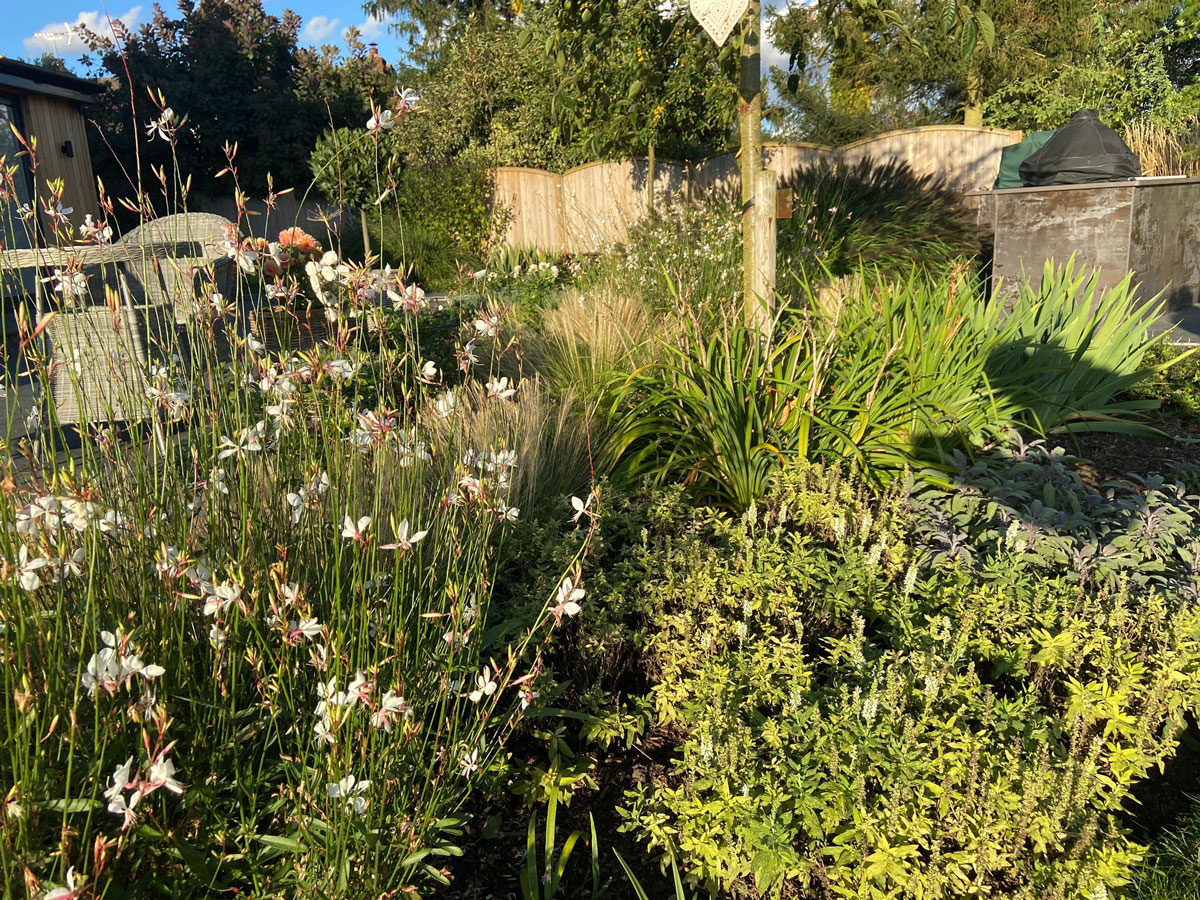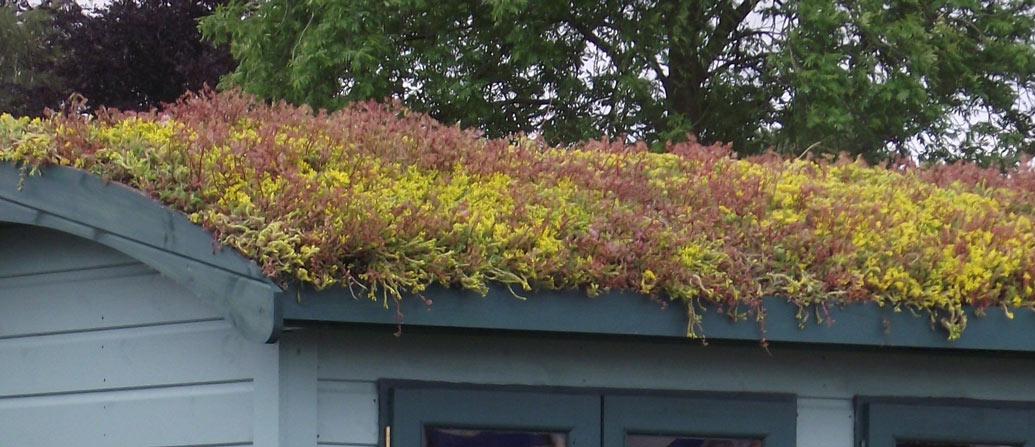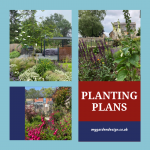Planting Plans to help combat climate change
What can the landscape industry do to support the fight against climate change? We’re looking at the ways in which a carefully considered planting plan can help reduce waste and give clients the confidence to have more plants in their gardens.
All the news coverage of COP26 got me thinking. Landscapers are pretty environmentally aware – at least the ones I talk to are, but could we all be doing more to help the environment? One area that could probably be improved upon is planting.
How many plants go to waste in this country simply because they’re planted in the wrong place? Maybe they look nice for 6 months and then shrivel up and die? Dead plants don’t absorb much CO2!
The wrong plants won’t necessarily perish in a garden. Some might grow too fast, get too big for their boots, and end up being cut down or uprooted. Either that or they’ll outcompete neighbouring plants and reduce the biodiversity on site.
Sometimes a plant in the wrong place won’t die – but it won’t thrive either. It will just sit there – not flowering, not growing and looking rather sorry for itself. It’s the robust plants that are growing and thriving that are the biggest benefit to the environment, so lets aim to put these into our gardens whenever possible.
Another fairly common consequence of choosing the wrong plant for a garden, is that the client gets in a muddle with maintenance. They might apply vast quantities of pesticides, fungicides and chemical fertilisers to try to remedy things. And the plants still don’t survive. And guess who gets the blame – yup – you’ve got it – the landscaper!

This planting plan is suitable for a sunny border with well drained soil – and as you can see – they’re thriving in the right position
Avoiding plant wastage
The answer to plant wastage is the same as the answer to wasting slabs or cement – planning.
- Have a strong design and a clear picture of the materials you need to buy. That way you won’t overspend and you won’t have high wastage on site.
- Understand your plants – make sure that they are fit for purpose and will cope well in the garden.
- Order in advance – to make sure you get the right pot size, quality and quantity of plants delivered when you need them.
- Prepare the soil before the plants arrive – and do a good job of it! Get rid of roots and debris, open up the soil structure, add compost and be prepared to mulch the plants once they’re in.
- Time the delivery so that nobody will forget to water potted plants in hot weather – and so that they don’t get damaged while you are moving things around on site.
- Set plants out according to your plan and before you start planting. That way you won’t need to disturb them once they’re settled in. AND the whole team can get involved with planting.
- Work from the back of the borders to the edges – don’t go trampling on what you’ve just planted!
- Recycle any plastic pots – most garden centres and nurseries operate recycling schemes.
- Make sure the client understands how important it is to keep the plants watered.
- Give the clients a copy of the planting plan so that they can learn about each species and how to care for it through the year.
Right plant, right place
Plants are funny old things. They like what they like. And each species has a different set of requirements. Some like lots of sunshine, others like shade. And whilst some species thrive in soggy soil, others will turn up their toes and drown if their roots are too wet.
It’s really easy to get the wrong plant in the wrong place, especially if you’re being pressured by the client to get the job finished. Or if you’re not 100% confident in your plantsmanship.
Let’s face it, most of us in the landscape industry have our specialities. Someone who is brilliant with stone might not excel at carpentry. A talented tiler may have to think hard about how to install lighting and a hard landscaper might not enjoy laying turf. So it’s no surprise, that some landscapers get in a pickle with plants..
It doesn’t help, either, that planting is usually the very last job to be done on site. By then, we’re all of us keen to move onto the next project, the client wants their garden “done” so that they can do the big reveal to their friends and family and the decorative bits are kind of rushed. Planting ends up being a dash to the garden centre with a remit to “buy something that will look nice”.
Having a clear planting plan, overcomes all of the above challenges. You know what to buy, you know where to place it and you know it will look good. Because you’re confident in what you’re doing, You can work quickly and get the job done in record quick time.
Choosing the species that are most likely to adapt to our changing climate as well as resist attack from pests and diseases goes a long way towards ensuring sustainability….it’s all about knowing your plants!
With a list of species – and a map of where they’re planted – your client can easily research and learn how to look after each plant. So there’s a far smaller risk of them (the plants!) dying. Which in turn, will work wonders for your professional reputation.

Even the shed roof can benefit from a well thought out planting plan!
Why investing in a planting plan is investing in the future
- Reduces plant wastage – only buy what you need and what will thrive in the garden
- Boosts your clients confidence in their gardening skills and encourages them to nurture and even to buy more plants.
- Cuts the need for chemical sprays – if plants are happy they’ll be healthy and therefore less likely to need treatments.
- Great for biodiversity and ecology – a nice array of healthy plants will develop into a thriving ecosystem
- On a more business orientated level: Your team can work more efficiently knowing that you have planned all of the planting in advance. You are less likely to be asked to replace dead plants at your own expense. And of course, your work will look amazing and quite possibly lead to word of mouth recommendations.
Find out how My Garden Design can help you with planting plans
Did you know that MGD can create a bespoke planting plan based on your own layout plan?
Or that it takes less than 4 weeks for a planting plan to be completed?
Plans are all beautifully presented with your logo and contact details (you can frame one as a gift for your client)
All planting plans are 100% bespoke and charged at trade prices – they’re more cost effective than you might think
Our recent blog answers some the questions we are often asked about commissioning a planting plan from My Garden Design. Click here to read it.




